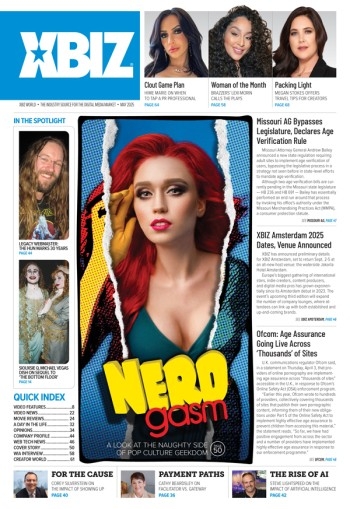Being a content creator offers potentially endless opportunities, but not all paths are the same. Two of the most popular ways to earn, camming and clip-making, each have unique perks and challenges. Some creators thrive on the energy of livestreaming, while others prefer the flexibility of pre-recorded content. But what if you didn’t have to choose just one?
Let’s break down the pros and cons of camming and clip-making, and look at why doing both might be the smartest move.
Camming provides immediate cash flow, while clip-making builds long-term passive income. Combining the two allows creators to enjoy the best of both worlds.
The Rewards of Camming
Camming is all about real-time engagement. Whether it’s playful teasing, deep conversations or high-energy performances, camming allows you to connect directly with your audience and earn money instantly. Unlike clip-making, where sales build over time, camming provides immediate income through tips, private shows and fan club subscriptions. The fast turnaround makes it appealing for those who want a steady cash flow.
Camming also builds a strong connection with fans. Viewers love live interaction, and many cam models build loyal audiences who return night after night. These relationships can lead to consistent income, generous tips and a dedicated fanbase willing to support your content across different platforms. Camming is also flexible in terms of performance. Whether you’re in the mood for a sensual show, a chill chat session or something in between, you can adapt your content based on audience requests and real-time feedback.
From a financial perspective, camming has a lower barrier to entry. Getting started mainly requires a good webcam, proper lighting and a stable internet connection. Compared to clip-making, which often requires cameras, editing software and storage space, the initial investment is relatively low.
The Challenges of Camming
While those are all great perks, camming also comes with its own set of challenges. One of the biggest drawbacks is income inconsistency. Some nights can be incredibly profitable, while others may be slow, and earnings depend on traffic and audience engagement. This unpredictability can be frustrating, especially for those relying on camming as their main or sole source of income.
The emotional labor involved in camming is another important factor to consider. Being engaging, upbeat and interactive for hours at a time can be mentally and physically exhausting. Dealing with difficult customers, boundary-pushers or slow traffic days requires patience and resilience. The time-intensive nature of camming can also be a drawback. Unlike clip-making, which allows for a more flexible schedule, camming requires you to be live online for extended periods to maximize earnings. Consistency is key, and success often depends on maintaining regular hours.
Privacy concerns are another challenge. Since everything happens in real time, there’s always a risk of accidentally revealing personal information. Additionally, intrusive fans or those attempting to dox models pose ongoing safety risks. Taking precautions and setting firm boundaries is essential.
The Rewards of Clip-Making
For creators who prefer working at their own pace, clip-making offers an appealing alternative. One of the biggest advantages of clip-making is its ability to generate passive income. Unlike camming, where earnings are directly tied to time spent online, clips can be sold repeatedly. A well-made, high-quality video can continue earning money long after it’s been uploaded, creating a more stable financial foundation over time.
With clips, you also have more creative control. You decide what, when and how you create. Whether it’s scripted fantasies, fetish content or artistic visuals, there’s no real-time pressure to react to audience demands. This makes it ideal for creators who enjoy crafting their own vision and want the freedom to produce content on their terms.
The flexibility of clip-making can be a huge draw. Since there’s no need to be live at specific hours, you can work whenever it fits your schedule. This makes it a great option for those with other commitments or anyone who simply prefers an independent workflow. Unlike camming, which requires constant engagement, clip-making requires less emotional labor. Without the need for live interaction, there’s no pressure to entertain or manage difficult viewers in the moment.
The Challenges of Clip-Making
Despite its benefits, clip-making comes with its own set of obstacles. One of the main challenges is the upfront investment. High-quality clips require good lighting, cameras, editing software, and sometimes costumes or props, which can be costly. Additionally, there’s a learning curve when it comes to filming and editing content, meaning it may take time to refine your skills.
Another challenge is the unpredictability of sales. Clip sales can be slow, especially when starting out. Building a library of content that consistently sells takes time, and creators often have to wait for their efforts to pay off. Marketing is also essential. Simply uploading videos isn’t enough — promoting content through social media, SEO and paid advertising is often necessary to drive traffic and boost sales.
Content theft and piracy are additional concerns. Once a clip is sold, there’s a risk of it being shared or pirated without permission. Many creators have to actively monitor and report stolen content, which can be time-consuming and frustrating if you’re on your own.
Por Que No Los Dos?
Rather than choosing between camming and clip-making, many successful creators blend both approaches to maximize their earnings and create a more sustainable business. Camming provides immediate cash flow, while clip-making builds long-term passive income. Combining the two allows creators to enjoy the best of both worlds.
One of the biggest benefits of this hybrid approach is repurposing content. Camming sessions can be recorded and turned into clips, allowing live performances to generate additional income. Similarly, clips can be used as teasers or promotional material to drive traffic to cam shows. By recycling content in a strategic way, creators can make the most out of their efforts without constantly producing new material from scratch.
Balancing both also creates more financial stability. On slow camming nights, clip sales can help fill the gap. Likewise, when there’s less time to cam, pre-made clips continue generating income in the background. This diversified approach ensures there’s always a revenue stream, regardless of fluctuating audience engagement.
Additionally, working across both formats helps build a stronger brand. Some fans prefer live interactions, while others enjoy pre-recorded content — by offering both, creators expand their reach and attract a broader audience. It also allows for greater flexibility. On days when social energy is high, camming is an option. When solitude is preferred, making and editing clips provides a way to earn without direct interaction.
Finding the Right Balance
Ultimately, there’s no single path to success. Some creators thrive on camming, while others love the control and flexibility of clip-making. Many find that blending both allows them to earn more, reduce stress, and create a more sustainable career.
For those just starting, experimenting with both is a great way to figure out what works best. Maybe livestreaming brings energy and excitement, but passive income is appealing for stability. Or maybe the ability to craft polished, high-quality videos is rewarding, but occasional camming helps with audience engagement. The key is finding what keeps you motivated and financially secure.
Whether you choose camming, clip-making or a mix of both, the most important thing is building a career that fits your lifestyle, strengths and goals.
Megan Stokes is co-founder of NMG Management, specializing in content distribution and management. As a veteran of the adult industry, she enjoys sharing the knowledge and data she has collected over time with those who seek her help.








